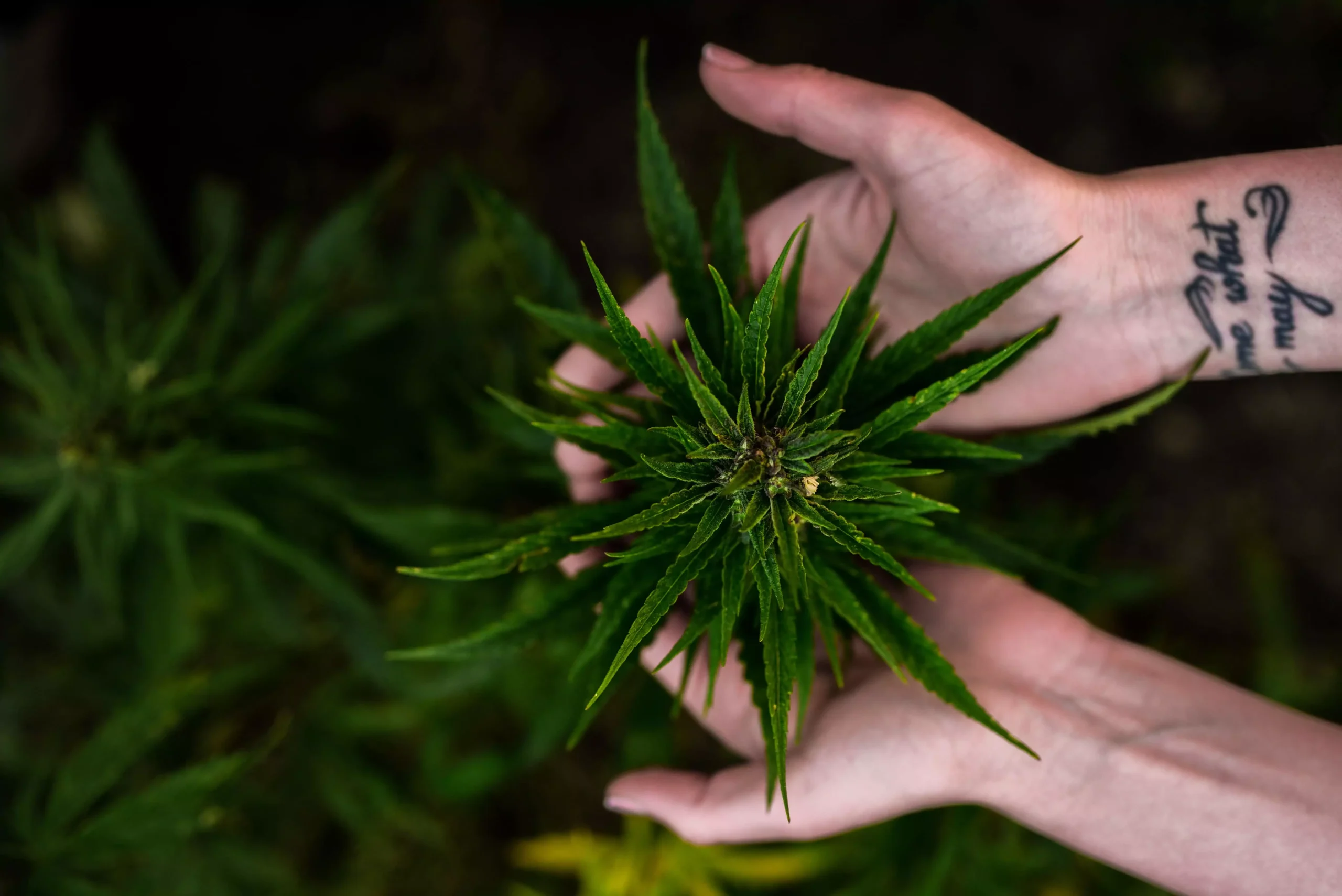Guest article by Eric Rosen, Dark Heart Nursery
Follow these 10 best practices for strong, healthy cannabis plants.
1. Maximize your resources
As the cannabis industry continues to mature, many indoor, greenhouse and outdoor cultivators are all re-examining their business practices to identify areas of inefficiency. Cultivators that outsource clones in their supply chain yield 2-3x the ROI of their limited canopy/real estate. Like every other business, this includes asking the question ‘Should we be doing this ourselves in-house, or would it make more sense to outsource?” As a cannabis farmer, taking clones yourself used to be a necessary evil because you simply couldn’t afford not to or didn’t have an alternative. Now, with legalization and the proliferation of clones, seedlings and teens available at scale via commercial cannabis nurseries, every cultivator should be objective from a business perspective about why they continue to clone in-house and not maximize profitability from a real estate perspective. Simply put, every square foot dedicated to flowering cannabis plants yields more dollars annually than the same square foot that is being squandered on a cannabis plant in a vegetative state.
2. Minimize your risks
If you’re like most cultivators today, you’ve accepted investor capital to grow faster and larger than you’d be able to otherwise. The other side of the bargain is that you have committed to produce healthy returns to your investors. Ensuring that your plants are pathogen free, and specifically free of the Hop Latent Viroid, is mission critical for long term cultivation success. This specific viroid can cause up to 30% loss in crop yield and a resulting 20% decrease of selling price in the marketplace for plants impacted by the viroid. The concept of ‘genetic drift’ in cannabis is a blanket label used to describe many symptoms, including, reduced vigor, abnormal branching, stunted trichome production, reduced potency, and an overall loss of quality and yield. As more scientific data gets published about Cannabis cultivation it seems a lot of what was once considered genetic drift may actually be being caused by pathogens such as Hop latent viroid. Therefore, minimizing economic risk by keeping this viroid out of your garden is an easy way to increase your yields and keep your investors as happy as possible.
3. Preserve your IP
You’re reading this article on a device, whether it’s a cell phone, laptop, tablet or desktop. Undoubtedly, any or all these devices are backed up either locally or in the cloud via digital backup because losing your data is an all-too-familiar painful experience. The good news is that you can back up your proprietary strains and genetics via Tissue Culture Storage. In case of fire, emergency, theft or otherwise irrecoverable disaster, your genetics can be safely stored offsite via Tissue Culture Storage.
4. Start with the end in mind
What your customers want, and your business needs may not be the same as what your long-term master grower knows how to grow. Grow cultivars (strains) of cannabis that are phenomenal for whatever your final use case may be. Carefully select varieties of cannabis that will maximize your specific definition of success based on the end product you are creating. For example, not all strains create uniform, symmetric buds that work the best in automated trimming operations. On another front, some strains ‘wash’ better for making ice water hash. Lastly, if you are making solventless extracts, select strains with the specific kind of terpene profiles you want to be as ‘loud’ (i.e. intense in a desirable way) as possible.
5. Embrace IPM (Integrated Pest Management)
You’d be surprised how much Mother Nature can deal with Mother Nature. Beneficial insects are called ‘beneficial’ for a reason. With proper preventative measures, there’s not much that organic solutions can’t handle. Don’t wait to need an IPM specialist. Hire one proactively so you can leverage preventative medicine for your plants.
6. Nothing is ever really gone
Where there’s life, there’s hope. Perhaps you’ve been holding onto an old cut of a rare strain that’s gone wayward and doesn’t produce like it used to. On the other hand, you may have old seeds you have been storing for decades. There’s even a technique called ‘Embryo Rescue’, which is an in vitro culture technique used to help save immature or weak embryos from old seeds (that wouldn’t normally sprout at all) into a healthy, viable plant. In either of these scenarios, Tissue Culture techniques can help rejuvenate and revive quite a wide variety of challenging genetic scenarios. Lastly, proper Tissue Culture rejuvenation can effectively be a ‘genetic reset’ button to take a plant back to its original form.
7. Build an ecosystem of trusted, long term partners
Cannabis has earned a unique place in the US as a recognized part of our ‘critical agricultural infrastructure’ during the COVID-19 crisis. On the other hand, cannabis as an industry is excluded when it comes to standard business relief enjoyed by other industries during these trying times. Form tight, pressure tested partnerships with other key members of your supply chain to keep costs down and trust up as the industry continues to wax, wane, twist and turn. This will be increasingly true as consolidation continues, and mainstream adoption of cannabis continues.
8. Variety is the spice of life
Constantly question your assumptions about what the marketplace desires. Operate via data-driven decisions as much as possible to ensure you’re creating the types and varieties of products your local marketplace wants the most.
9. More is not always better
Obsessing over THC % is not doing consumers any favors with respect to preference, selection and intellectual honesty. There are strains that clock in at 16% and 17% THC which will have you convinced they’re laced. Consumers desperately need education about the existence and importance of the Entourage Effect. Accordingly, high THC % isn’t necessarily a leading indicator of flower potency. My favorite example of this is Northern Lights #5 X Haze, arguably the very first branded hybrid cannabis strain, and went on to win multiple Cannabis Cups in the early 1990s. I’d still put this up against any cultivar available in dispensaries today and it would easily hold its own. The THC % on paper wouldn’t impress any buyer at your distributor, but it would certainly give them a run for their money when they sampled it. There’s an entire chapter of cannabis history waiting to be written about the development of authentic product marketing. Chapter #1 will be undoubtedly be called “More is not always better”.
10. Ego is not your amigo
Just because you’ve done things a certain way in the past doesn’t mean you have to continue doing so. Many cultivators have SOPs (Standard Operating Procedures) or best practices that are rooted more in familiarity than objective superiority. “We do this because we’ve always done this” is the phrase of death for pretty much any business, and cannabis cultivation is no exception.
Learn more about Dark Heart Nursery here.



